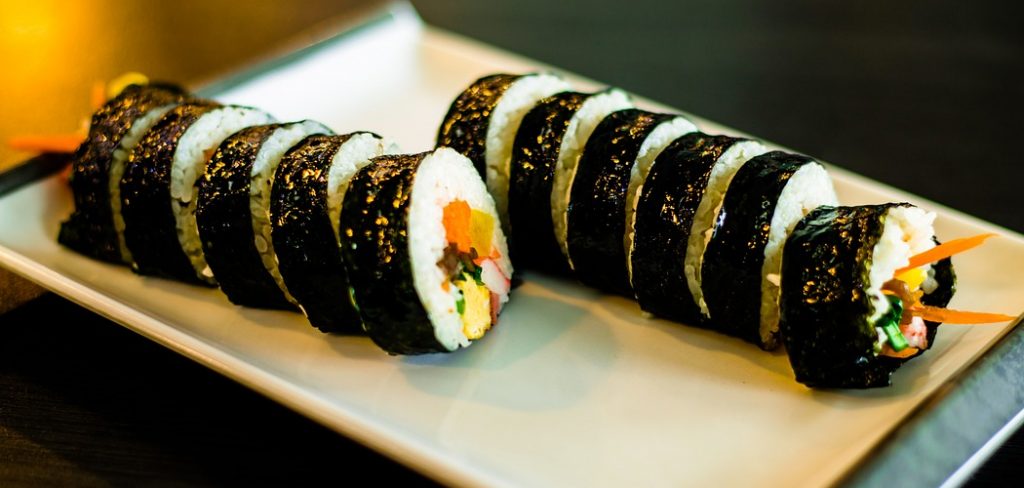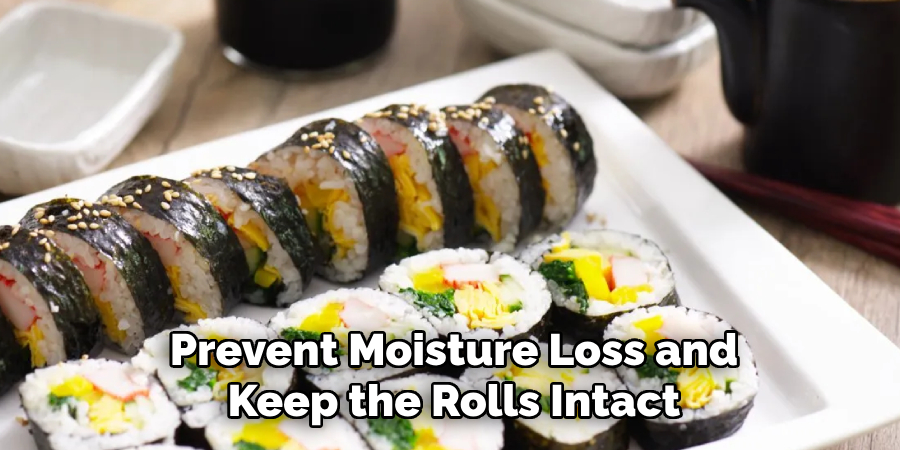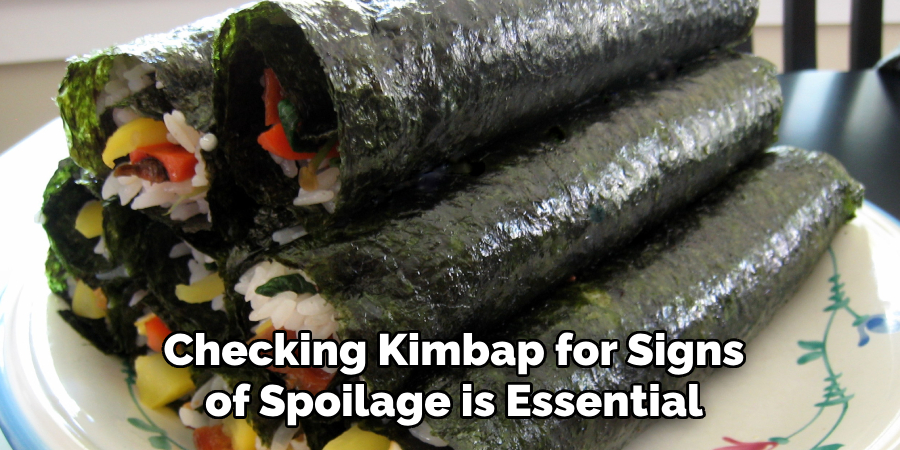Kimbap, a popular Korean dish, is a delicious combination of seasoned rice, vegetables, and proteins wrapped in seaweed. While it’s best enjoyed fresh, storing kimbap properly can help maintain its flavor and texture for later consumption. Whether you have leftovers or are preparing it ahead of time, knowing the correct storage methods is essential to keep it safe and tasty. This guide explores the key aspects of how do you store kimbap.

Proper Storage to Maintain Texture and Prevent Spoilage
To preserve the texture and prevent spoilage, it is crucial to store kimbap correctly. If you plan to eat it within a few hours, wrap the rolls tightly in plastic wrap or aluminum foil. This helps to retain moisture and prevent the rice from drying out. For longer storage, it is best to refrigerate the kimbap, but keep in mind that refrigeration can harden the rice and alter the texture.
To minimize this, store the kimbap in an airtight container or wrap it securely before placing it in the fridge. Additionally, avoid leaving kimbap at room temperature for more than two hours, as the combination of rice and perishable fillings can lead to spoilage. Reheating refrigerated kimbap briefly in the microwave can help restore some of its original softness, though it’s always best served fresh.
Storing Kimbap at Room Temperature
If you need to store kimbap at room temperature for a short period, it is important to take precautions to keep it fresh and safe to eat. Ensure the kimbap is wrapped tightly in plastic wrap or aluminum foil to prevent it from drying out and to protect it from external contaminants.
Place the wrapped kimbap in a cool, shaded area away from direct sunlight or heat sources. However, it is crucial to note that kimbap should not be left at room temperature for more than two hours due to the risk of bacterial growth, especially if it contains perishable ingredients such as eggs, fish, or meat. Always prioritize food safety and consume room-temperature kimbap within this time frame to enjoy its best flavor and texture while minimizing any health risks.
10 Methods How Do You Store Kimbap
1. Wrap in Plastic Wrap for Short-Term Storage
If you plan to eat your kimbap within a few hours, wrapping it tightly in plastic wrap is the best way to prevent moisture loss and keep the rolls intact. This method helps retain the softness of the rice while preventing the nori (seaweed) from becoming too dry. Store the wrapped kimbap at room temperature for up to four hours, away from direct sunlight or heat sources.

2. Refrigerate for Extended Freshness
Refrigeration is necessary if you need to store kimbap for more than a few hours. To prevent the rice from becoming too hard, wrap the kimbap individually in plastic wrap or parchment paper and place them in an airtight container. This method helps reduce moisture loss and keeps the filling fresh. Before consuming, let the kimbap sit at room temperature for 15–20 minutes to soften.
3. Use a Damp Cloth to Prevent Rice from Drying
When storing kimbap in the refrigerator, covering it with a slightly damp cloth before sealing it in an airtight container can help retain moisture. This method prevents the rice from becoming too firm and maintains a more palatable texture when reheated or eaten later.
4. Avoid Storing with Wet Ingredients
Certain ingredients, such as pickled radish, cucumbers, or kimchi, release moisture over time, which can make the kimbap soggy. If you plan to store kimbap for a long period, consider using drier ingredients or wrapping moisture-rich fillings separately before assembling the kimbap right before eating.
5. Freeze for Long-Term Storage
Freezing is a great way to store kimbap for an extended period. To freeze, wrap each roll in plastic wrap and place them in a freezer-safe bag or airtight container. Label with the storage date and freeze for up to one month. When ready to eat, thaw in the refrigerator overnight or warm in the microwave for 30 seconds to restore texture.

6. Reheat Properly for Best Texture
If refrigerated or frozen kimbap has hardened, proper reheating can help restore its texture. The best method is to microwave the rolls for 20–30 seconds, wrapped in a damp paper towel. Alternatively, pan-frying the kimbap in a lightly oiled skillet gives it a crispy exterior while warming the inside.
7. Use Vacuum-Sealed Bags for Maximum Freshness
Vacuum-sealing kimbap removes excess air, preventing oxidation and moisture loss. This method extends its shelf life while preserving its taste and texture. Store vacuum-sealed kimbap in the refrigerator for up to three days or in the freezer for a month. Before eating, let it thaw or warm it up for the best experience.
8. Store in a Bento Box for On-the-Go Meals
If packing kimbap for lunch or travel, using a bento box lined with parchment paper helps prevent moisture buildup and keeps the rolls from becoming soggy. Adding a small ice pack in warm weather can help maintain freshness and prevent bacterial growth.
9. Brush with Sesame Oil to Prevent Drying
Brushing a light layer of sesame oil on the exposed rice areas helps prevent them from drying out. This method also enhances flavor and prevents the rolls from sticking together. Store the oiled kimbap in an airtight container at a cool temperature until ready to eat.
10. Monitor for Signs of Spoilage
Regardless of the storage method used, checking kimbap for signs of spoilage is essential. Discard kimbap that develops an off smell, slimy texture, or discoloration. Properly stored kimbap remains fresh for up to 24 hours in the refrigerator and up to a month when frozen.

Conclusion
Properly storing kimbap is essential to maintain its freshness, texture, and flavor. By using the appropriate storage techniques for short-term, long-term, or on-the-go needs, you can ensure the kimbap remains safe and enjoyable. Whether wrapping it tightly for room temperature storage, refrigerating it correctly, or freezing it for future consumption, each method comes with its own set of best practices. Thanks for reading, and we hope this has given you some inspiration on how do you store kimbap!
Professional Focus
Angela Ervin, a former interior designer turned blogger, specializes in kitchen design and renovations. Through her website, she blends her passion for cooking with design expertise, sharing practical and creative ideas. Known for balancing functionality and beauty, Angela’s insightful content has made her a trusted voice in home design and lifestyle.
About the Author
Angela Ervin, an experienced interior designer and blogger, combines her passion for kitchen renovations with storytelling. Living in Petersburg with her family, she enjoys cooking and testing her projects firsthand. Known for her humor and relatable style, Angela shares creative, functional design insights through her content, making her a trusted voice in home design.
Education History
University: Virginia Commonwealth University
Degree: Bachelor of Fine Arts (BFA) in Interior Design
- Angela’s education at VCU focused on mastering core interior design principles, including spatial planning, color theory, materials selection, and sustainable design practices.
- She gained hands-on experience through studio projects and collaborative design exercises, which honed her ability to create functional and aesthetically pleasing environments.
- Her coursework also emphasized problem-solving and practical applications of design, preparing her for real-world projects like her self-directed kitchen renovations.
- The program’s strong foundation in both technical skills and creative expression shaped Angela’s ability to seamlessly integrate form and function in her work.


